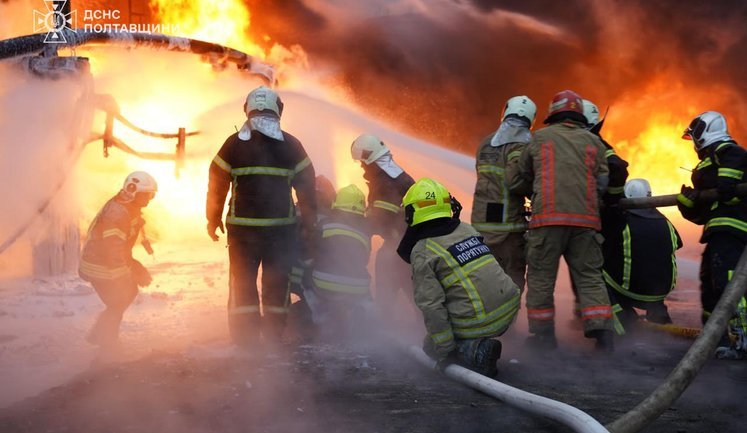In recent months, the Poltavska region in Ukraine has been repeatedly targeted by Russian forces. The attacks have involved a combination of missiles and UAVs, causing significant damage to key infrastructure, including energy facilities, water and heating services, and public transport. Kremenchuk city has been notably affected, with incidents like the striking of enterprises and civic structures leading to power outages and interruptions in vital services. Despite these challenges, recovery efforts are ongoing, aiming to restore electricity, water, and stability within the region. The continued aggression from Russian forces underscores the severe impacts on civilian lives and the regional economy, emphasizing the urgent need for safety measures and international attention.
What has been the impact of Russian attacks on Poltavska region?
The Russian attacks on Poltavska region have severely impacted infrastructure, including energy and water supply facilities. Civilian structures, such as residences and enterprises, have also been damaged, disrupting daily life. Efforts to restore services are ongoing amid the continued threat of aggression.
How are emergency services responding to the attacks in Poltavska?
Emergency services in Poltavska are actively engaged in firefighting and rescue operations following attacks. They are working tirelessly to restore disrupted services, clear debris, and ensure the safety of civilians. Coordination with national bodies is crucial in these efforts.
What measures are being taken to restore energy in the Poltavska region?
Restoration of energy in Poltavska involves repairing damaged infrastructure, including energy facilities and power lines. Temporary solutions and alternative supply routes are established to mitigate the impact of continued attacks and minimize disruptions in daily life.
What is the situation regarding public transport in the Poltavska region?
Public transport in Poltavska has faced disruptions due to attacks on infrastructure like railway facilities and roads. Routes are being adjusted, and repairs are ongoing to restore services. Authorities are coordinating efforts to provide alternative travel options for affected residents.
Are there humanitarian responses following the strikes in Poltavska?
Humanitarian responses in Poltavska involve local and international aid focused on providing essential supplies, medical care, and supporting infrastructure repair efforts. These initiatives aim to assist affected communities and provide relief amid the ongoing conflict.
How is the local government addressing the ongoing attacks in Poltavska?
The local government in Poltavska is actively working to coordinate response efforts, including disaster recovery and infrastructure stabilization. They are also engaging with national authorities to seek additional resources and support for enhancing regional security and responding to civilians' needs.
What role do international partners play in aiding Poltavska region?
International partners provide critical support to Poltavska through humanitarian aid, technical assistance, and efforts to strengthen infrastructure resilience. They are also advocating for comprehensive peace talks and long-term solutions to end hostilities in the region.
How are civilians coping with the ongoing military conflict in Poltavska?
Civilians in Poltavska are demonstrating resilience, relying on community solidarity and support networks to cope with disruptions. The continued efforts to rebuild and adapt highlight their determination to maintain normalcy despite the adversities posed by ongoing military conflict.
































































